Duccio(?) at the Met
In 2004, the Metropolitan Museum of Art, following the lead of Director Philippe de Montebello, made their most expensive acquisition in the history of the institution when they purchased a small painted panel attributed to the late Gothic Sienese master Duccio di Buoninsegna.
This past summer, a debate ensued when ArtWatch President and Columbia Professor James Beck questioned the authenticity of the work, and the Met presented its case via the press. In response, Professor Beck sent the following letter to the New York Times, in an attempt to rectify certain fallacies that had appeared in an item printed on 8 July. It never appeared in the Times, nor was the letter acknowledged by its editors.
JULY 15, 2006
To the Editor,
Mistakes of fact and interpretation in the July 8 Times item entitled “Authenticity of a Met Masterpiece is Challenged” require comment.
(1) The Met’s claim that “virtually every scholar of Duccio accepts this picture as Duccio” is misleading. One expert, Professor Florens Duechler, who was himself a curator at the Met’s Cloisters, did not in his monograph of 1984. In 1997, a monograph by Andrea Weber (Cologne: Könemann) omits the picture altogether from his catalogue of Duccio’s works. In fact, the first known published reference to the painting was in 1901, at which time it was attributed not to Duccio of ca. 1300 but to Sano di Pietro, a 15th century Sienese artist.
(2) The central interview in the item was with Luciano Bellosi, one of the world’s few bona fide Duccio experts. He is quoted as highly enthusiastic about the Duccio attribution. What the item failed to report is that Bellosi has never actually seen the painting. In an interview with Lee Rosenbaum published July 10, 2006 (culturegrrl.blogspot.com) he admitted as much:
“No, unfortunately I didn’t see it with my own eyes, only by photographs….I know it is a very important question. It is always necessary to see the works of art in reality to be sure what they are….Art historians like Keith Christiansen and Everett Fahy [of the Met] are very capable to judge the works of art with their eyes. I know their capacity. I trust in them for that.”
Actually, none of the experts who have written monographs on Duccio over the past 50 or more years ever saw it! As Bellosi himself acknowledges, it is of major importance from the point of view of proper connoisseurship.
(3) To support its Duccio attribution, the Met claims that the parapet or perspective shelf in their painting influenced a picture located in the Museo Civico of Montepulciano. The item failed to include my response, namely that the pictures are diverse in size, scale, format, function and derive from different artistic traditions. The Montepulciano Madonna and Angels has three standing figures within an arch, while the Met’s tiny picture is a rectangular tableaux with a single group, a conception congenial to 15th century Flemish and Italian portraits, where the parapet functions spatially as a plane in front of the sacred images. In making this claim, the Met asks us to believe the impossible: that an anonymous pupil copied the notion of the parapet from the master, yet it never again appears in any of Duccio’s
works, nor in the works of any of his great pupils, Pietro Lorenzetti, Ambrogio Lorenzetti and Simone Martini. That scenario would be unique in art history.
(4) Contrary to the item, I first expressed my doubts about the authenticity of the painting directly to the curator Mr. Keith Christiansen in an exchange of e-mails one year ago this month. [Full text of e-mails available on request.]:
(4) Contrary to the item, I first expressed my doubts about the authenticity of the painting directly to the curator Mr. Keith Christiansen in an exchange of e-mails one year ago this month.
[Full text of e-mails available on request.]:
Sent: Tuesday, July 19, 2005, 2:28 PM
To: Christiansen, Keith
Subject: RE: greetings from Italy
Dear Keith: ……I would be dishonest if I did not mention to you that I personally have some problems with the painting….
(5) The item also failed to include my response to the Met’s suggestion that its scientific testing proved the Duccio attribution. To begin with, it is most indicative that these tests were conducted after the purchase, not before. Besides these tests cannot prove an attribution—they can at best rule out certain kinds offorgeries or misattributions.
(6) The item failed to include my reasons for bringing the Duccio error to public attention. I believe that when a mediocre object is classified as a great work by a great artist, that artist is unfairly diminished and the public is misled.
Sincerely,
James Beck (Professor)

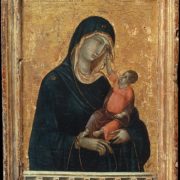

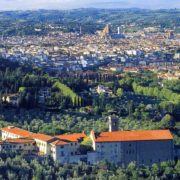

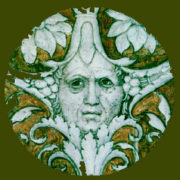

 Firenze, 20 giugno 2006
Firenze, 20 giugno 2006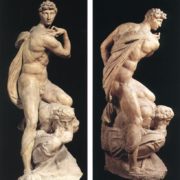
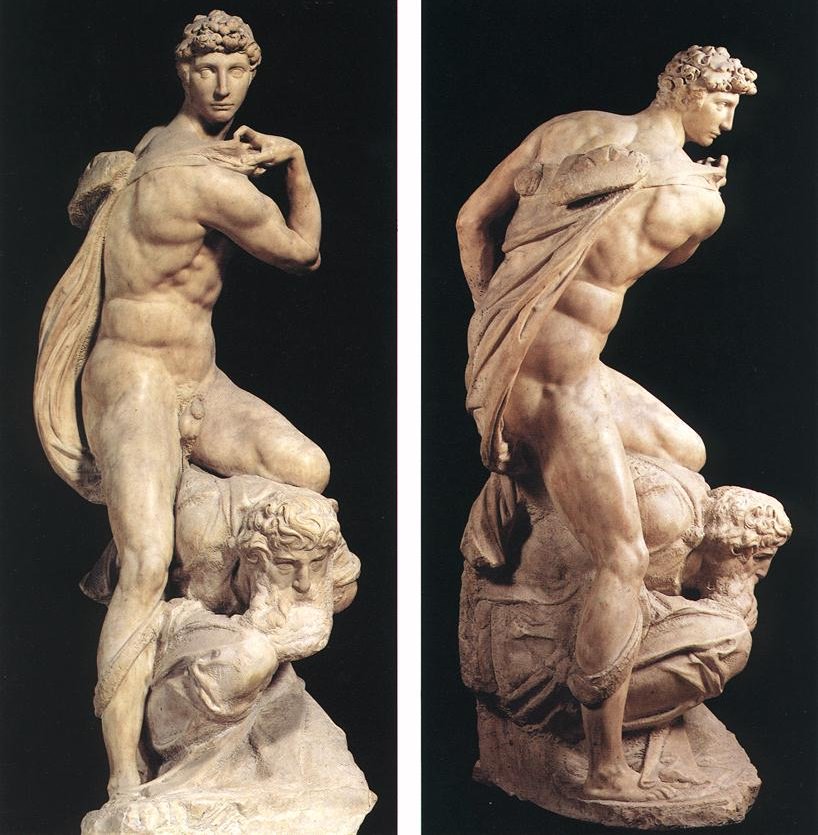 In an open letter to the Mayor of Florence, ArtWatch is calling for an immediate halt to the restoration of Michelangelo’s statue group known as “Victory”.
In an open letter to the Mayor of Florence, ArtWatch is calling for an immediate halt to the restoration of Michelangelo’s statue group known as “Victory”.